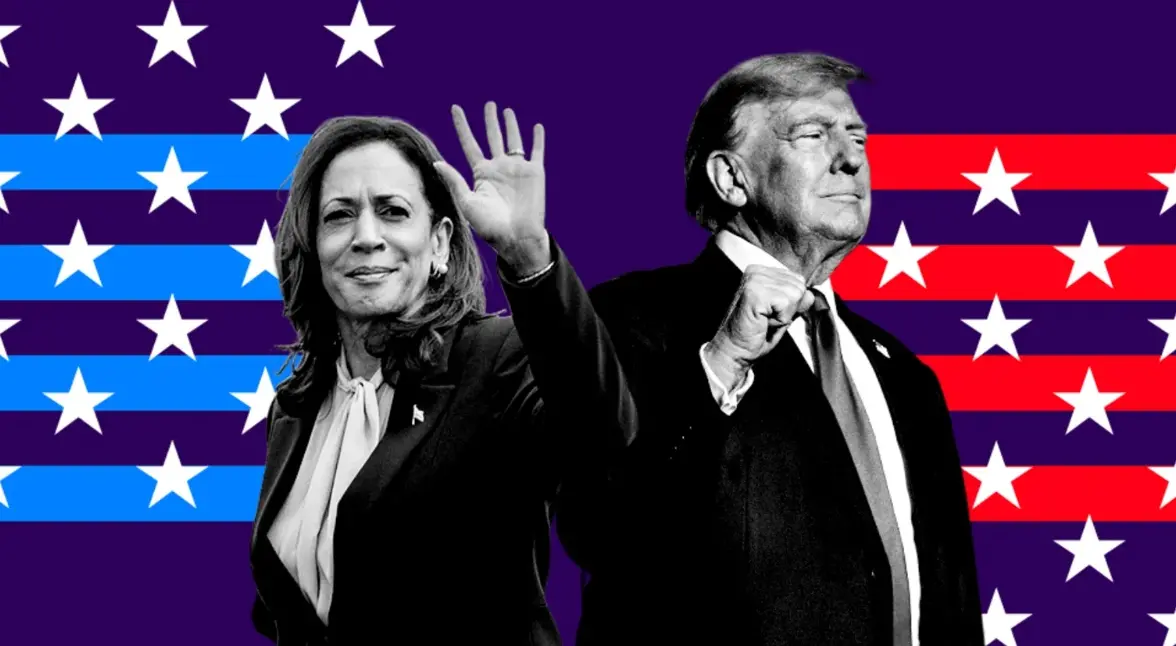Democrat Harris's first clear economic policy: How "opportunity economy" will impact the crypto world
Author: @Web3Mario (https://x.com/web3_mario)
Abstract: This week, the market officially enters a calm period before the Jackson Hole meeting, with everyone waiting for Powell to provide an official interpretation of the latest employment and inflation data, as well as clear guidance on future monetary policy. This will undoubtedly become a key reference for the September interest rate decision. However, an interesting piece of information emerged last Friday that did not attract much attention in the crypto world: Democratic presidential candidate Harris officially announced her first clear economic policy framework—the "Opportunity Economy" framework. While I was organizing an analysis article on Usual Money last Friday, I didn't notice it, but after studying the relevant details over the weekend, I found some insights that I thought were interesting and wanted to share with everyone. Overall, Harris's "Opportunity Economy" framework is an extremely leftist economic proposal, specifically aimed at reducing the living costs of the American people through government policy in four areas: housing, healthcare, food and daily necessities, and childcare. If this proposal is implemented, it could potentially drive the cryptocurrency market to replicate the trends of 2021, but it would also be accompanied by a resurgence of inflation in the United States.
Harris's First Economic Policy Document: "Agenda to Lower Costs for American Families"—A $1.7 Trillion Subsidy Plan
Recently, with Harris's official nomination as a presidential candidate and the active promotion by major investors and media, her momentum has significantly increased. Polling data even briefly surpassed Trump, creating a sense of public expectation. Of course, those familiar with the electoral system may understand that polls are a highly subjective and unofficial activity; organizers can cleverly derive desired results through survey methods, questionnaire design, and the selection of survey subjects. Therefore, it is not surprising that the Democratic Party, which controls mainstream media, can easily create such impressive data. Thus, it is best to adopt a wait-and-see attitude towards this matter. However, this also reflects that after consolidating internal forces, Harris's campaign team, with its fully activated propaganda machine, remains a force to be reckoned with. This is also why Trump is eager to return to Twitter and actively interact with Musk. Therefore, we need to actively observe and analyze Harris's potential governance route.
One of the core points that has long been questioned about Harris is that she has not demonstrated a clear economic policy preference since entering politics, which is mainly related to her work history. Of course, considering her past handling of political issues, including immigration and public safety, Harris has shown a leftist populist attitude, and the market has somewhat anticipated that her economic policies might lean left if she takes office. However, with the release of her first clear economic policy document on August 16—"Agenda to Lower Costs for American Families"—many were taken aback and it sparked considerable controversy. To explain briefly, the reason this proposal is called the "Opportunity Economy" is that Harris's team believes that by reducing costs for American families, many middle-class individuals will gain more job and entrepreneurial opportunities, thereby stimulating overall economic vitality and reviving the American Dream. The main controversy arises because this is an extremely leftist economic policy that aims to reduce the living costs of Americans through government intervention in four areas: housing, healthcare, food and daily necessities, and childcare.
In terms of housing, it mainly includes three specific directions:
Harris calls for the construction of 3 million new homes to end the housing supply shortage within the next four years. This plan will be stimulated through three directions, including tax incentives for building entry-level homes and affordable rental housing; establishing a $40 billion federal innovation fund to incentivize innovative housing construction solutions; and reducing government review and approval processes to lower related costs.
Lowering rent by cracking down on corporations and major landlords, including preventing Wall Street investors from buying and reselling homes in bulk at inflated prices, and eliminating tax incentives for purchasing single-family rental homes; preventing large corporations from manipulating rental prices through private equity-supported pricing tools.
Providing a $25,000 down payment subsidy for first-time homebuyers, significantly expanding the Biden administration's 400,000 subsidy slots to 4 million and relaxing review standards.
In terms of healthcare, it mainly includes three directions:
Setting a cap on insulin costs at $35 and a cap on out-of-pocket prescription drug costs at $2,000.
Accelerating negotiations for prescription drugs under Medicare.
Enhancing competition and requiring the healthcare industry to improve transparency, starting with a crackdown on pharmaceutical companies that hinder competition and the abusive practices of intermediaries that squeeze small pharmacy profits and increase consumer costs.
In terms of food and daily necessities, it mainly includes:
Advancing the federal government's first ban on price fraud for food and groceries.
Establishing clear rules that prohibit large companies from unfairly exploiting consumers to obtain excessive profits from food and groceries.
Ensuring that the Federal Trade Commission and state attorneys general receive new powers to investigate companies that violate regulations and impose strict new penalties.
In terms of childcare, it mainly includes:
Tax cuts for middle-class families with children, with a maximum credit of $3,600 per child.
Providing a $6,000 tax credit for families with newborns in their first year.
Tax cuts of $1,500 for dual-income families.
Tax cuts for purchasing health insurance.
These proposals are promised by Harris's team to be implemented within the first 100 days of her administration to alleviate the living costs of ordinary Americans. The most controversial aspects mainly focus on the housing and food and daily necessities policies, as well as the overall budget of the policy. First, most opponents believe that the radical housing subsidies and construction policies will significantly increase government financial pressure, leading to a more severe debt crisis. Secondly, the policies regarding food and daily necessities also contradict market principles. Blaming inflation on the improper profits of related companies clearly indicates a lack of understanding of the market and a misunderstanding of the different characteristics of oligopolistic and fully competitive markets. In fact, the retail industry is a fully competitive market, and most retailers maintain single-digit profit margins in their retail businesses. Government intervention would disrupt the balance of supply and demand in the market, leading to a new round of inflation and causing the bankruptcy of many related companies.

Finally, regarding the overall budget of the proposal, the non-profit organization responsible for the federal budget committee estimates that the proposal will lead to an increase in government deficits between $1.7 trillion and $2 trillion over the next 10 years. This could cause three main problems: first, it would exacerbate the already worsening debt crisis in the United States; disordered government spending would continue to consume America's credit and trigger a potential dollar crisis. Secondly, this stimulus plan would further drive up domestic inflation in the United States. Finally, since Harris's team claims that this budget will be borne by the wealthy in the tax structure, it undoubtedly contradicts Trump's tax cuts for businesses that benefit the rich, which will further intensify social conflicts within the United States. It can be seen that after the public announcement of this bill, both the dollar index and gold, as a safe-haven asset against inflation, reacted quite violently.


Impact on the Crypto World—Short-term Bullish, Long-term Bearish
Next, let's analyze the impact of this bill on the crypto market. One of the proud aspects of American society has always been its spindle-shaped social class structure. Although the proportion of the middle class is on the decline, it still exceeds 50% overall. The impact of this bill mainly benefits this segment of the population. We know that the effectiveness of government policy interventions in the economy exhibits diminishing returns, as it significantly affects the expectations of various market participants. However, in general, the impact of government intervention in the short term is still strong and effective. Therefore, if the above proposal can be implemented, the short-term effects are beyond doubt. At that time, the living costs of most middle-class American families will significantly decrease, leading to an increase in disposable income for residents in the short term. This creates fertile ground for the rise of risk assets, especially high EPS technology assets. The reasoning is simple: when the "chives" become wealthy, large capital can make money, and when large capital makes money, it will actively promote new narratives, leading to a more active market.

This story played out once in 2021, when the $1.9 trillion COVID-19 relief bill promoted by the Biden administration in early 2021 caused a surge in disposable income for most American families in the short term, which completely ignited a surge in the cryptocurrency market led by Bitcoin. Of course, as the wealth effect accumulated, inflationary pressures in American society became increasingly severe, and the subsequent story is well known: to combat stubborn inflation, the Federal Reserve had to undergo a monetary tightening cycle lasting more than two years. This also triggered a significant pullback in risk assets. Therefore, I believe that if a similarly scaled economic policy can be implemented, it will be bullish for crypto assets in the short term, but in the medium to long term, we need to be wary of the monetary policy risks brought about by the resurgence of inflation. Of course, this requires Harris to win the election and ensure that the policy can be effectively implemented. I will continue to pay attention to this in the future.










